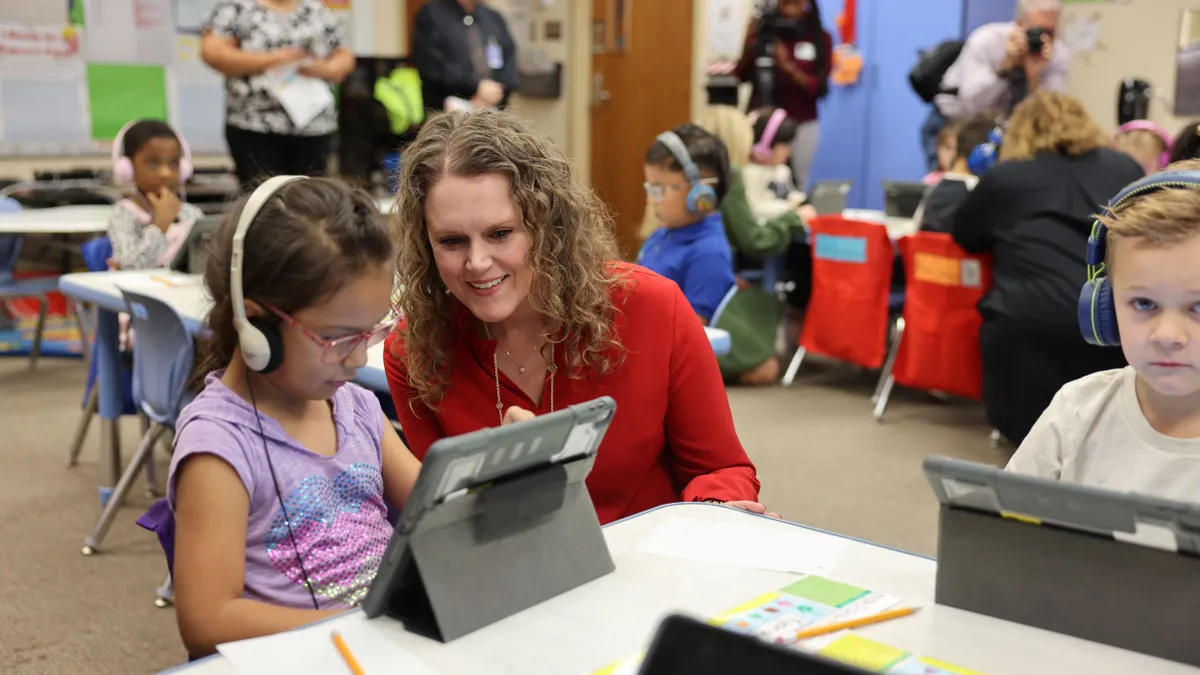CORRECTION: A previous version of this story omitted Chuck Gardner's specific division within the Cyber Innovation Center, the National Integrated Cyber Education Research Center.
A fascination with cryptography led high school math teacher Paul Kelley to develop a way to use the code-building practice to explain algebraic concepts to students at Anoka High School in Anoka, Minnesota. Kelley wanted to tap into ways math is used in everyday life — places where students would never give it a second thought — to spark their interest so they would stop asking how they would “use this stuff,” he said in an interview.
“I showed them, for example, how cryptography gets the credit card numbers from their computers to Amazon without the bad guys intercepting it, and all the mathematics that go into it,” said Kelley.
Thomas Jefferson used cryptography, Agnes Driscoll cracked codes in World Wars I and II, and Julius Caesar’s cipher is so famous and relatively simple that elementary school children can be taught his code, as well. The practice of hiding information through codes is the ultimate linguistic puzzle, a gameplay so enthralling to the right student that courses are now woven into elementary, middle and high school curriculum.
High school interest
Kelley’s session on cryptography is a week-long section of an advanced-level math class, with mostly seniors enrolled. Students get three credits at the University of Minnesota, as well as high school credit, he said. The class is popular enough that Kelley taught two sections when it started and now teaches four, with roughly 120 students out of a senior class of 600 now signed up.
While the students don’t write computer code — there really isn’t enough time for that — they do work on basic poly-alphabetic ciphers, he said, which use multiple alphabets to create a hidden message. One group of students even wrote a cipher that used the first Book of Kings from the Bible, which was "obviously too complicated to break,” said Kelley.
Famous ciphers
Two of the better-known ciphers, which can both be tailored for students young and old, include Julius Caesar’s and the Jefferson-Lewis cipher. The latter was developed by Thomas Jefferson to send coded notes to Meriwether Lewis as Lewis surveyed the Northwest with William Clark. It is built on an alphanumeric table and a keyword.
Caesar’s cipher is also built around the alphabet, but is known as a simple shift cipher, where each letter is moved a set number of places. This kind of code is one that can be easily adapted for elementary school children, where they can write a note and then use the cipher and see if their classmates can crack it, said Kelley.
In Caesar’s time, however, the code, even in its simplicity, would have been difficult for most of the general population to crack, as they were considered illiterate, Chuck Gardner, director of curriculum for the National Integrated Cyber Education Research Center at the Cyber Innovation Center (CIC), said in an interview.
Daily use of ciphers
The CIC uses the Caesar cipher and others through courses it has developed for students. But students are also using ciphers in their daily lives, potentially without realizing they’re dabbling in code.
“People are encrypting messages with acronyms and abbreviations,” said Gardner, a former classroom teacher, adding that he often banned so-called text talk in his classes. “When you replace ‘you’ with ‘u,’ you’re using a shortcut for ‘you’ but also hiding information from those who don’t know colloquial language.”
Today’s more advanced encryptions, the ones that protect financial data for example, are often computer-based, using several prime numbers at their core. In the advanced math course CIC drafted, called AMES, students do spend time practicing these, known as RSA algorithms, but use small prime numbers so they can finish their assignments. Advanced cryptography, after all, is fairly intensive — and Gardner even admits that the AMES class is not one of the most popular of CIC's courses.
Teachers who sign up to follow and teach this advanced math class are in the low hundreds, potentially because they may not believe they have the ability to teach the course itself. Gardner gets that, but notes that CIC can train teachers who want the additional support.
There are also free online courses offered through the National Initiative for Cybersecurity Careers and Studies, aimed at post-high school professionals.
Still, he understands that cryptography and advanced math may not be for everyone. For those ambitious students who get sparked by cracking puzzles and solving problems, though, it can be a great lure and a possible career choice down the road.
“You’ve got to be strong in math and science, be interested in linguistics — in learning languages and other cultures,” he said. “Computer sciences are about making the games, and cryptography is about solving those puzzles.”




















